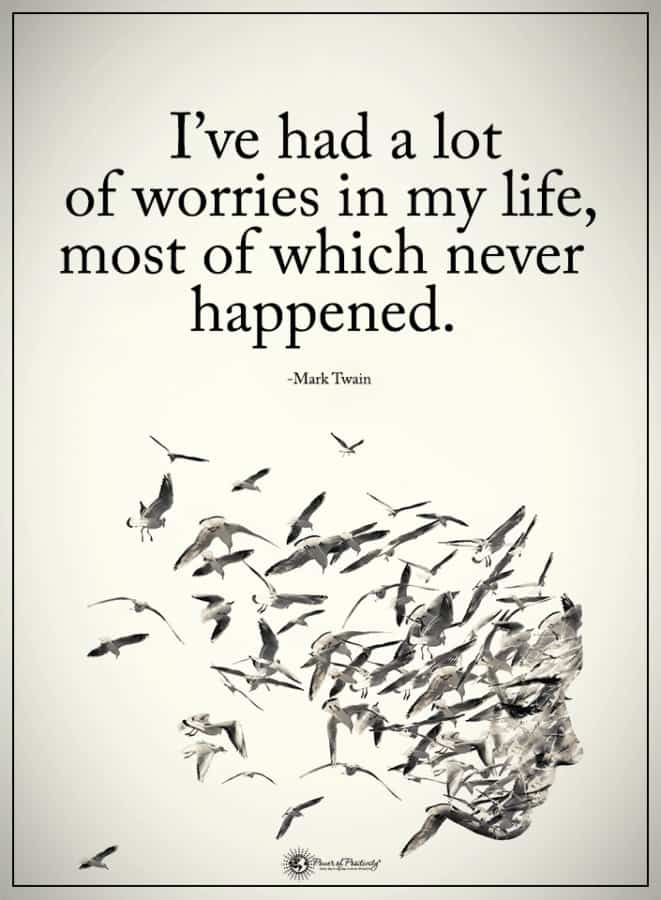Mindfulness practices have found a much-needed home in the West. For many reasons, there is perhaps a no better time to teach kids how to become mindful individuals.
What is Mindfulness?
“[Mindfulness] is the opposite of absent-mindedness. Whenever we’re lost or confused about what to do, we can simply come back to the present-moment experience.” ~ Joseph Goldstein, ‘Mindfulness: A Practical Guide to Awakening’ (Source)
The origins of mindfulness are traced back to ancient India and Nepal some 2,600 years ago. It was at this time and place when Siddhartha Gautama – who’d later become the Buddha – taught his followers the concept of sati.
The Pali word sati roughly translates to the English word ‘mindfulness.’
Jon Kabat-Zinn, the creator of the Mindfulness-Based Stress Reduction (‘MBSR’) program, defines mindfulness as: “…paying attention in a particular way: on purpose, in the present moment, and nonjudgmentally.”
On the surface, being mindful seems to be a rather simple concept. However, one soon discovers that ‘simple’ in no way means easy.
Unpacking Kabat-Zinn’s definition of mindfulness serves as a viable framework for helping explain why the practice is difficult for the modern person.
“…paying attention.”
Um, yeah, many of us – if not most – aren’t too good at paying attention. Daniel Goleman, Ph.D., author of the book ‘Focus: The Hidden Driver of Excellence,” recalls a conversation with an advertising representative, who told Goleman:
“Today, you have to keep it [client presentations] to a minute and a half. If you don’t grab them by then, everyone starts checking for messages.”
Really? Can’t people keep their phones in their pockets for 90 seconds while someone makes a presentation?
You may have also heard about the famous “goldfish” study, where researchers insist that the average human attention span is shorter than that of our freshwater friend. Great.
“…on purpose.”
When we pay attention to something “on purpose,” we’re exercising two attentional faculties: directed attention and sustained attention. Directed attention is where we voluntarily choose the ‘object’ of our focus (e.g., a presentation). With selective attention, we ignore the presence of potential distractions for a while to focus on one thing (e.g., a task.)
Sustained attention can only develop through disciplined effort – and people (understandably) need to have a good reason to exert it. Therein lies the problem.
Unless something truly captures our fancy, it’s all too easy to tune out. Which is what we do most of the time.
…in the present moment.”
The human mind is continuously ruminating about the past or projecting into the future. If you observe your mindstate, you’ll feel a gentle“tug” as your mind seeks the next moment – and then the next. Never allowing you to settle into this moment.
We can easily observe this phenomenon on our morning commute. People always want the traffic to move. Why? There is usually no good reason.
The Evidence for Mindfulness
Evidence supporting the benefits of mindfulness (and mindfulness meditation) in adults is convincing. Prestigious universities like Harvard, Yale, and Stanford are on board, as is the U.S. military, and corporations such as Google, Apple, and Nike.
Why? Because it works.
Thousands of rigorous research studies have reached the same conclusion. A Harvard professor by the name of Sara Lazarone conducted an early study. Her 2011 research was among the first to document the effects of mindfulness (MBSR) training on brain structure and function.
Lazar’s conclusion:
“…[mindfulness] is associated with changes in gray matter concentration in brain regions involved in learning and memory processes, emotion regulation, self-referential processing [a type of metacognition], and perspective-taking [i.e., empathy].” (Emphases added.)
Until recently, the vast majority of mindfulness research focused on adults. Fortunately, smart people in high places decided it was time to introduce mindfulness practice to children.
The results thus far look promising.
– In a study of 64 second- and third-grade students (7-9 years old) published in the journal Psychology, mindful awareness practices (MAPs) “showed gains in behavioral regulation, metacognition, and … executive control.”
– In a study of early adolescent students, a mindfulness education program improved self-reported measures of optimism and self-concept.
– A study of contemplative practices effects on teacher and student outcomes were “…positive,” including on “…the health and well-being of teachers … [and] students who are at risk of reacting to stress in ways that are destructive.”
10 Things That Make Kids More Mindful
“Mindfulness … [has] beneficial effects on the emotional wellbeing, mental health, ability to learn, and the physical health of school students.”
~ Katherine Weare, ‘Evidence for the Impact of Mindfulness on Children and Young People’ (Source)
Without further ado, here are 10 (fun!) ways to teach kids to be more mindful:
-
“Strike a Pose!”
A fun way to get kids into mindfulness is by having them pose like their favorite superhero! This exercise engages the child’s creativity and focus and is a great way to boost their self-confidence.
Ask the child who their favorite superhero is (e.g., Wonder Woman, Batman, Superman, etc.). Then tell them to pose like their idol.
Tip: if they’re having trouble coming up with something, do an image search online, show it to the child, and see how accurately they can duplicate the picture!
-
Breath Buddies
Have a young child pick out their favorite stuffed animal. Ask them to try and balance the toy on their belly while taking a big breath. As an added challenge, tell them to watch the rise and fall of their belly while balancing the toy.
This is an excellent and fun activity for teaching young kids concentration and focus.
-
Tense and Release
Starting with at the feet, gently and slowly tighten the toes and then the whole foot. Work your way up with the child, having them tighten and squeeze their calves, upper legs, abdomen – all the way up to the scalp.
Tense and release are a common meditative practice that both releases muscle tension and enhances focus.
-
Body Scan
Body scanning is another popular meditative technique for improving concentration. Here are step-by-step instructions on how to perform a body scan.
1) Sit comfortably in a chair or lie down.
2) Bring your attention to your body.
3) Take a few slow, deep breaths.
4) Feel the sensations of your feet on the floor. Pressure, tension, heat, tingling, etc.
5) Next, notice the feelings of your legs against the chair. Then the back, abdomen, chest, upper and lower arms, neck, face (including eyes and jaw), and the top of the head. Finally, feel the sensations throughout the whole body.
-
Make a Glitter Jar (Fun!)
While a simple project, a ‘glitter jar’ can teach kids the power of being mindful. It’s also an informal “introduction” to “meditation” – and has powerful effects of calming mind and body.
Here’s what you’ll need: a small jar, clear glue, glitter, a few drops of food coloring (optional), hat water, and a whisk.
Instructions:
1) Fill the jar with 20% glue and 80% hot water. Mix with the whisk.
2) Add 1-2 tablespoons of glitter. (To make it extra fun, add the glitter of different colors.)
3) Add a couple of drops of food coloring (optional, but recommended. Think of a lava lamp.)
4) Put the lid on and give it a good shake.
5) Unscrew the cap and allow the mixture to cool for a while. (Tip: for safety reasons, place the jar out of the reach of children during the cooling phase.)
6) After the liquid cools, tighten the lid and seal it with super glue.
-
Name the Emotion
Challenge your child to stop and name at least one strong emotion per day. Ask them to describe the feeling. If they can’t, ask some leading questions like:
– When you’re upset, how does your tummy feel?
– Can you feel the butterflies in your stomach when you’re excited?
This exercise teaches kids the valuable skill of emotional regulation (i.e., “emotional intelligence”).
-
Be Mindful While Eating a Raisin (or some other treat)
Mindful eating is an unappreciated yet powerful mindfulness exercise. Here’s how it works:
1) Pick up a raisin.
2) Carefully examine the raisin’s texture. What do you see?
3) Feel the raisin. Describe it.
4) Put the raisin on your tongue. Do not bite yet. How does it feel and taste?
5) Slowly chew the raisin and notice any flavors.
-
Count the Sounds
This is a mindfulness listening exercise and an excellent way to teach directed and sustained attention.
Stop and notice the sounds all around. It may be the humming of a refrigerator, the sound of an animal call, or the nearby traffic. With a relaxed but focused mind, count how many noises you can hear in one minute.
-
“Let’s wash our hands!”
Here’s another straightforward yet powerful mindfulness exercise for kids. Slowly washing the hands, one notices just how relaxing this routine activity can be.
Notice the sounds of running water, the feel of the soap, and the sensations as the hands are rinsed. Feel the cloth of the towel as you dry.
-
Sending Kind Thoughts
Ask your child to picture someone in mind. It may be a friend at school or someone else. With the eyes closed, teach them to send loving, kind thoughts like:
– May you be happy.
– May you be peaceful.
– Finally…May you be strong and healthy.
Then, have the child send themselves kind and loving thoughts.
















 Community
Community

